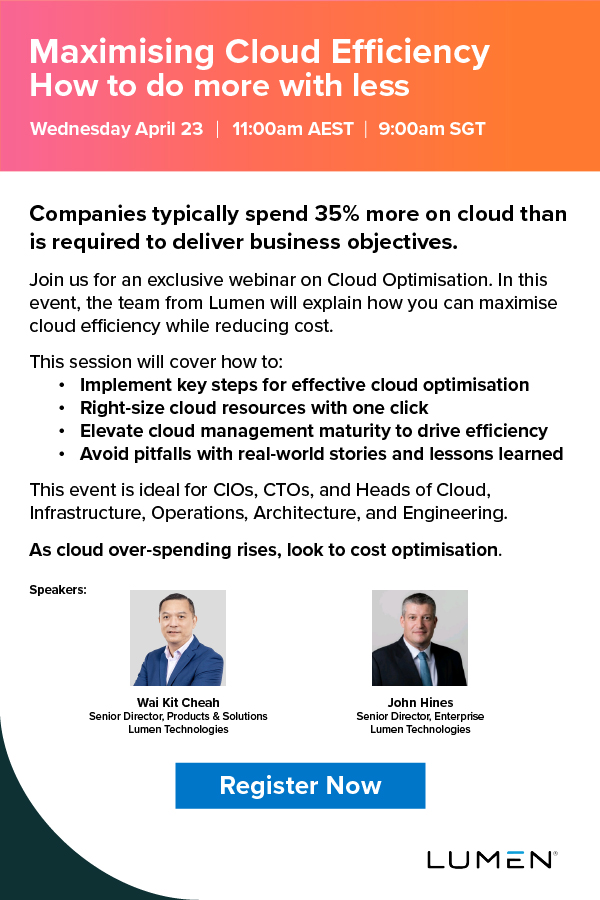Agility is the ability for a business to rapidly respond by changing its systems, services or products when faced with changes in customer needs, or more lately with disruptive, internet driven business models. Truly agile companies are often referred to as operating at the ‘edge of chaos.’
The ‘Oracle Cloud Agility’ study surveyed 2,263 employees working for large enterprises to understand business agility in the age of cloud. The results show that, in Australia, only 51% consider their organisation to be agile - the lowest out of all countries surveyed.
The study also found:
- Australian businesses are the least confident globally, when it comes to their level of business agility
- Many organisations cannot flexibly manage workloads or rapidly develop, test, and launch new applications, leaving them poorly prepared to deal with competitive threats
- The impact of agility on competitiveness is critically important to businesses. The ability of competitors to launch innovative customer services more rapidly was identified as the top threat by businesses
- Up to 59% of businesses do not have an IT infrastructure capable of responding to these competitive threats
- A lack of awareness among businesses around how technology, like Platform-as-a-Service (PaaS), can be used to help address these challenges
|
|
Which all augers well for Oracle , a huge company founded in 1977 and second only to Microsoft as a software developer. In true agile mode it has had to change to offer all its services via the cloud, hybrid and on premise.
I interviewed Tim Scott, Oracle’s Senior Director and head of cloud transformations in Australia and New Zealand.
Tim added a personal insight to the findings. “Australian business is behind the curve in thinking about, or transitioning to the cloud and as a consequence are often not innovative or fast enough to respond to new business models and disruption,” he said.
Of course we were talking about major disruptors - Uber, AirBnB and more simply talking market share from established business. “These companies could not have achieved prominence so quickly without the flexibility of the cloud,” he said.
Tim was keen to explain that the cloud was more than SaaS (software as a service) or storage. “These days the cloud is a platform as a service (PaaS) that can do anything in an on-demand manner. You can scale up and down as business dictates,” he said.
Significantly, the survey reveals the agility benefits delivered by PaaS are not being leveraged. In fact, 63% of Australian businesses either cannot, or do not know if they can shift workloads between public, private, and hybrid clouds, and migrate on-premises applications to the cloud – this was the second highest figure globally after the UK. Additionally, only 44% of businesses can develop, test, and deploy new business applications for use on mobile devices within six months, with this figure falling to just 21% within a one month timeframe.
PaaS is replacing SaaS. “Initially SaaS works for a quick fix – it will do perhaps 80% of what a business needs (process) but the remaining 20% - what defines the business is where PaaS shines,” he said.
This discussion turned to cost - CAPEX (capital expenditure needed to buy computer systems) versus the OPEX (operating expenditure) model prevalent with PaaS. “The Cloud will cost about the same if you compare the true cost of CAPEX and its impact on the cash flow and balance sheet and OPEX over time. If a user gets bill shock from OPEX it usually means they are not managing cloud resources properly. Oracle has a metered deliver approach to avoid that,” he said.
Ever the cloud evangelist Tim commented on the major advantage of the cloud, “It is against days or weeks for an inual servier in minutes es"ts bill shock from OPEX it usually means they are not managing clours all there. Spin up a new virtual server in minutes as against days or weeks for an in-house deployment. Equally quickly scale-up or down using cloud tools – its on demand computing,” he said.
“Australia is behind the curve in embracing cloud because we have had so much reliance on legacy on premise systems and we are hesitant to decommission them – we want maximum value over time. If you are not planning five years ahead and that does not include cloud you will not remain competitive to those who are. Make the fundamental changes now,” he said.







































